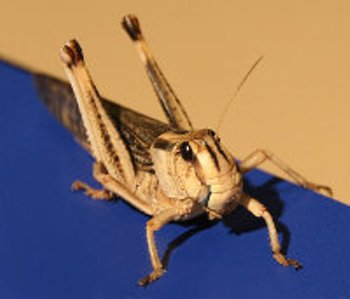Tiny insect-sized flying machines with micro-cameras are being developed for covert military surveillance operations and for exploring dark, dirty and hazardous places.
 Ready for take-off: a locust awaits its turn to fly
Ready for take-off: a locust awaits its turn to fly
These machines have flapping wings that are based on the wings of insects. Nature has inspired the design of these aerial vehicles.
A research group at the University of Oxford, led by Dr Richard Bomphrey, is developing the vehicle with the support of the Engineering and Physical Sciences Research Council (EPSRC). They are studying the evolution of insect wings that has occurred over the past 350 million years. The evolutionary process has led to many types of wings. The group aims to study why evolution has not settled on a particular type of wing.
The existing unmanned types of surveillance vehicles have fixed-wings and have a width of approximately 12”. Objects require both lift and thrust for flying. Flying machines have wings for providing the lift and engines for providing the thrust. These are separate devices and impact the capacity of these machines. Insect wings provide both lift and thrust. Studying insect wings would enable design of new surveillance vehicles that can fly like insects. The vehicles could be customized for applications including sports coverage, and viewing chemical spills, collapsed buildings and hostile terrains.
The research team is using the most modern high-resolution, high-speed camera technology and computer modeling capabilities for studying the performance and design of insect wings. They are also utilizing particle image velocimetry technique for calculating the velocity of air flow around insect wings. Insects are placed inside a wind tunnel and the air is seeded with a light fog. Pulsing laser light is used to illuminate the particles.
The European Office of Aerospace Research and Development, the US Air Force and NATO have been impressed by this research work. The study is expected to lead to deployment of tiny insect-sized aerial vehicles within 20 years.